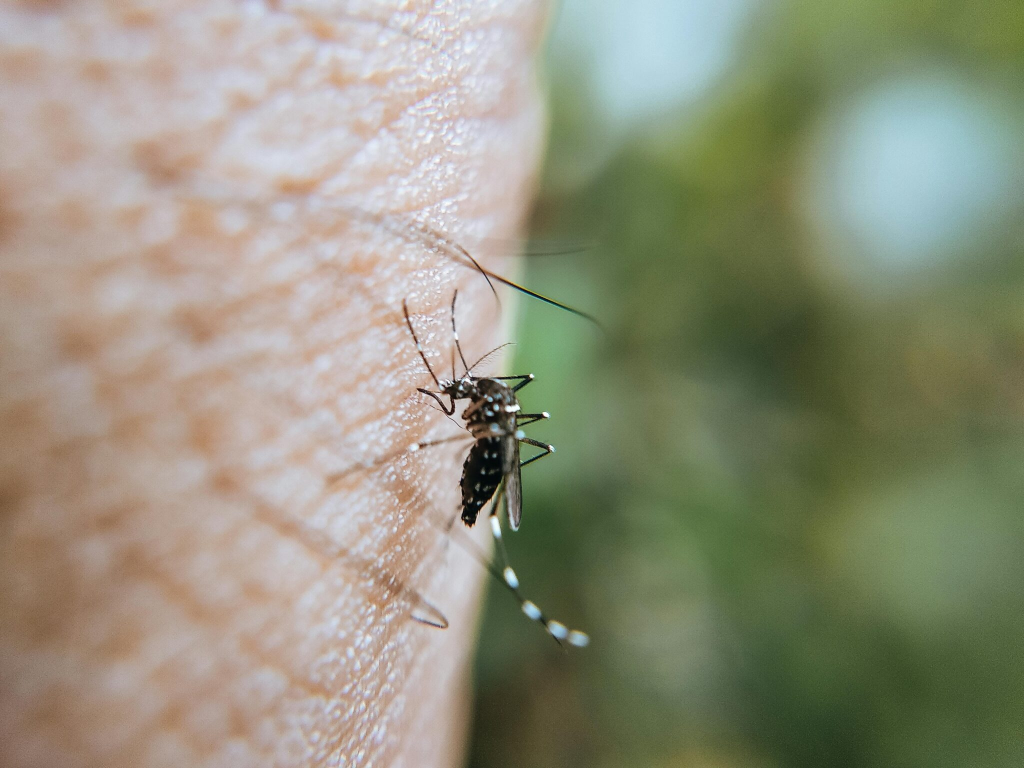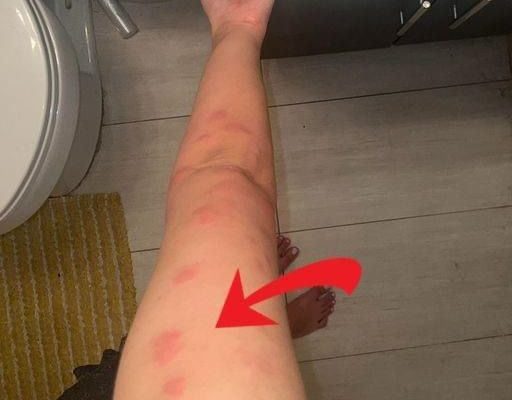
Off The Record
What Bit Me? Spot These 13 Bug Bites
It can be a worrying experience to get bitten by a bug, particularly if you don’t know what little critter caused the red, throbbing welt on your skin. Do not panic.
The majority of ordinary insect bites and stings are benign and swiftly recover. However, some insect bites and stings, such as those from bees, hornets, wasps, and fire ants, can result in severe pain or even a life-threatening allergic reaction.
Others, such as bites from dangerous spiders, need emergency medical attention right away.

It’s helpful to know what kind of bug bit you, because each bite has unique characteristics that can help you identify the person who did it and treat it.
Knowing how to recognize a bug bite based on its appearance and sensation will help you decide whether to seek medical attention right away or treat it at home.
The appearance of 13 bug bites is shown below.
Mosquito Bites

A mosquito bite is mostly a harmless bug bite, but it can occasionally result in a serious infection such the Zika virus (especially dangerous for pregnant women), West Nile virus, malaria, or eastern equine encephalitis (EEE). [1]
- Zika causes a short-lived, flu-like disease for most people. However, microcephaly and congenital abnormalities are common in babies born to pregnant mothers infected with Zika [2].
- The Centers for Disease Control and Prevention (CDC) reported 24 cases of West Nile virus in 14 U.S. states in 2024. [3] Headaches, bodyaches, fever, vomiting, joint pain, diarrhea, and a skin rash are among the symptoms. [4] Those who have a more severe West Nile infection may develop meningitis or encephalitis, which includes symptoms like neck stiffness, severe headache, disorientation, high fever, and convulsions.
- According to CDC data, only around 2,000 cases of malaria are reported in the United States each year, and the disease is contracted through the bite of a parasite-infected mosquito. [5] Malaria symptoms are similar to those of the flu and might include fever, headache, muscle aches, diarrhea, nausea, and vomiting.
- EEE cases are uncommon yet fatal. Thirty percent of those infected with EEE do not survive, and many of those who do experience issues with their brain and neurological system. [6] The virus causes headache, fever, vomiting, convulsions, diarrhea, sleepiness, and behavioral changes. [7] On average, 11 people in the US contract this virus each year.
Bedbug Bites

Because bedbugs inject a chemical in their saliva that makes bites harder to see, [8] you may see three or more grouped red marks, commonly forming a line, up to 14 days after a bedbug bite. [9] You usually won’t feel pain when a bedbug bites you.
A mild or severe allergic reaction can occur in certain people. A raised, red skin lump, blister, or welt known as hives that is extremely itchy and swollen for several days might be the outcome of this [10].
According to the American Academy of Dermatology Association, you should see a board-certified dermatologist for treatment if you have hives, numerous bites, or notice a bite that appears infected. [8] Bedbug bites can happen anywhere on your body, but they usually appear on uncovered areas like your neck, face, arms, and hands. [8] The CDC states that although bedbugs are common and bothersome, they do not spread disease [11].

Venomous spider bites, such as those from the black widow or brown recluse, are quite harmful and can result in a serious reaction. [12] The bite of the black widow, which appears as two puncture scars, induces an intense, instantaneous pain that is followed shortly by numbness. Additional symptoms that may persist for one to three days include: [13]
- An itchy rash
- Intense sweating
- Breathlessness
- Headache
- Producing more saliva
- Muscle cramps in the shoulders, chest, back, and stomach that hurt
- Swollen or drooping eyes
Even if you didn’t witness the spider that bitten you, you should always get medical help right away if you think you could have been bitten by a deadly spider. Dial 911 or 800-222-1222 to reach America’s Poison Centers. Intense pain, a developing wound at the bite site, breathing issues, or spreading redness or streaks are all indicators that immediate medical attention is required [12].
Some spider bites are a serious emergency, but the majority are not deadly and merely result in mild symptoms like red skin, swelling, and discomfort at the location, or even no symptoms at all [12]. You should seek medical attention right away if you experience symptoms of an allergic reaction to a spider bite, such as tightness in the chest, difficulty breathing, difficulty swallowing, or facial swelling. [14] The CDC also advises getting a tetanus booster shot every ten years because spider bites can transmit tetanus. [15]
Brown Recluse Spider Bites
The poisonous brown recluse spider typically inhabits shady, empty areas. It is common for people to be unaware that they have been bitten by a brown recluse until approximately one hour after the bite. [13] In the hours that follow, the bite may worsen and resemble a blister or bruise with a blue-purple patch surrounding it, resembling a bullseye. [13] Later, the bite becomes crusty and develops scarring. The University of Kentucky states that this kind of spider is found in a number of Midwestern states, the central Southern states (such as Arkansas, Alabama, Louisiana, Mississippi, Missouri, and Texas), and the western portions of some Southern states (such as Georgia, Kentucky, and Tennessee). It hardly ever ventures outside of these regions. [16]
A brown recluse spider bite can cause fever, chills, itching, nausea, and sweating within a few hours. [17] According to MedlinePlus, some people will experience a serious reaction that can result in kidney failure, seizures, and coma. [17] If you think you may have been bitten by a poisonous spider, make sure you get medical help right away. Dial 911 or 800-222-1222 to reach America’s Poison Centers.



